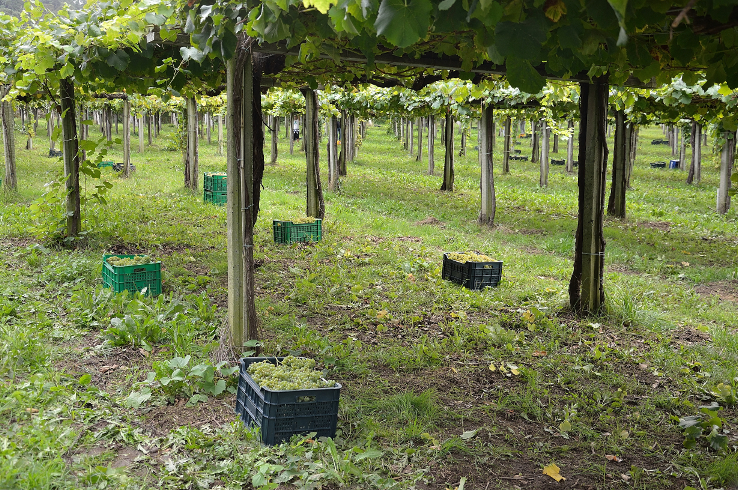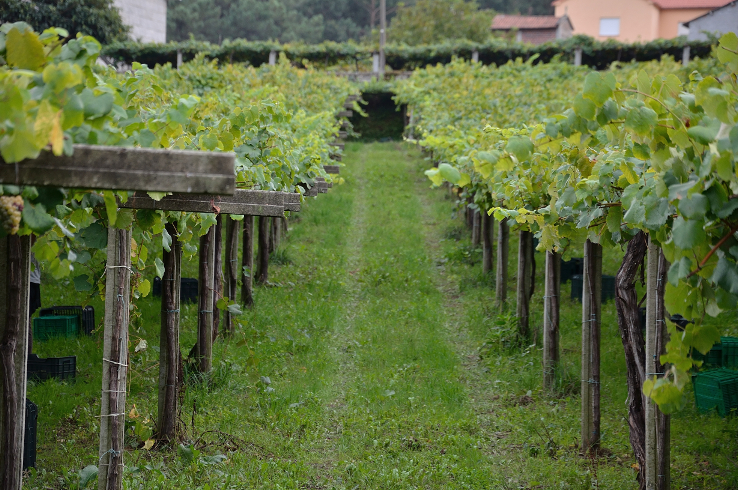2020 Viña Cartin Rías Baixas Albariño
Quintessential is the only word I can use to describe this wine. It comes from the ancestral home of Albariño, located directly on Spain’s Atlantic coast. It’s bright and refreshing… a solid weeknight staple.
Sustainable farming practices and hand-harvested.
- Tasting Notes Meyer lemon, clementine, citrus pith, honeydew, white grapefruit, marcona almond, sea salt
- Variety Albariño
- Region Spain, Rias Baixas
- Volume 750ml
- Alcohol Volume 13%
- Table Talk This wine comes from Val do Salnés, which many call the birthplace of Albariño.
$24.00
Out of stock
Viña Cartín was founded in 1977 in Spain’s Salnés Valley, the oldest of Rias Baixas’ five subregions. In 2003, Viña Cartín moved their operations to a new location—an old winery in the heart of the area—and refurbished its interior with modern technology, yet maintained the estate’s artisanal character.
Contrary to the many regional wineries who purchase fruit, Viña Cartin proudly owns and sustainably farms 50 acres of their own vines. This direct access to the source allows them to control the raw material from start to finish. The estate’s vines average 30 years in age and benefit from the influence of the nearby Atlantic ocean. The resulting wines are bright, balanced, and laden with natural acidity.
ALBARINO
A pleasantly refreshing light white wine. Most known from Rias Baixas in Spain, but additionally as Vinho Verde in Portugal. Albariño’s are generally high in acid with refreshing citrus fruit flavors and a notably saline mineral character due to the regions’ proximity to the ocean. Serve these wines well-chilled while eating fish tacos on a hot summer day, you won’t be disappointed.
GALICIA, SPAIN
Part of what can be referred to as “Green” Spain, Galicia is located in the upper north west corner of the country. Wine production here dates back to the time of the Romans. It is one of the coolest areas producing refreshingly crisp Albariño with strong mineral characteristics as well as elegant red wine from the Mencía grape. Galicia boasts five denominated wine regions (DOs) including the infamous Rías Baixas, the closest DO to the Atlantic ocean.
Related Items
-
2002 Emidio Pepe Montepulciano d’Abruzzo
$300.00Extremely limited availability! Emidio Pepe has a cult following for his non-conventional winemaking techniques that have made the estate and their wines legendary. Better yet – we’ve aged the wine for you. Experts say this wine will peak from 2018-2030, aka now!
Organic farming practices, hand-harvested, native yeast fermentation, no fining/filtering, and no added sulfites.
-
NV Sorelle Bronca Prosecco Treviso DOC ‘Modì’
$25.00‘Modì’ stands out from typical, mass-produced Prosecco because it’s handcrafted by the Bronca sisters from start to finish. With a focus on biodiversity and minimal intervention, this low-alcohol, bone-dry (zero sugar added) sparkler proves that exceptional quality doesn’t have to come at a high price—how refreshing!
Certified organic farming practices, hand-harvested, aged for 4 months on the lees and only 2,500 cases produced.
-
2021 Clefs des Murailles ‘Vacqueyras’ Rouge Red Blend
$31.00Let’s face it, we all love CDP (Chateauneuf-du-Pape), but most of us can’t afford to pull those corks on a daily basis. That is where ‘Vacqueyras’ comes in. It’s swimming in the next lane, with eerily similar characteristics, at a lower price. This is one of my party trick wines (looks pricey and tastes pricier).
Sustainable farming practices, woman-winemaker.
-
NV Delavenne Champagne Père & Fils Cuvée ‘Dom Basle’ Brut Reserve Grand Cru
$65.00Named Dom Basle in homage to the great figure in the history of Champagne and the Montagne de Reims, the Cuvée Dom Basle – Brut Réserve is the great classic of Maison Delavenne.
This well-balanced Champagne combines finesse, regular fruitiness and consistency over time. Clear color with golden reflections. Notes of white dried fruits. A seductive roundness, a freshness associated with finesse. Can be enjoyed as an aperitif or with a meal.
Organic/biodynamic farming practices, native yeast fermentation, and less than 2,000 cases produced annually.










